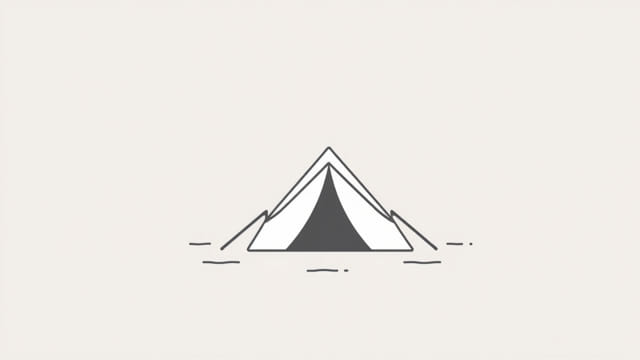Camping is one of the most rewarding ways to connect with nature, and choosing the right location emplacement tente camping meaning the ideal spot to pitch a tent is a critical part of the experience. Whether you’re planning a weekend in the forest, a summer at the beach, or an adventure in the mountains, where you place your tent can greatly affect comfort, safety, and overall enjoyment. Selecting a good tent pitch isn’t just about views it’s also about weather, terrain, accessibility, and proximity to facilities. Let’s explore how to choose the best tent location for your next camping trip.
Understanding Tent Camping Locations
What Is a Tent Emplacement?
In camping terminology, an ’emplacement tente’ refers to the designated area for placing a tent at a campsite. These can be officially marked spots at a commercial campground or simply a flat, safe area in the wild for backcountry camping. Good emplacements often come with level ground, shade, some wind protection, and access to water or bathrooms depending on the location type.
Types of Tent Camping Sites
- Primitive Sites: These offer minimal amenities just a clearing or flat area for pitching a tent. Ideal for nature lovers and backpackers.
- Developed Campgrounds: Typically include flat pads, picnic tables, fire pits, and nearby toilets or water stations.
- Beach Campsites: Located near coastlines, offering ocean views and breezes but requiring good anchoring due to sandy terrain.
- Mountain Campsites: High elevation areas that may offer panoramic views, cooler temperatures, and potential wind exposure.
Choosing the Right Location for Tent Setup
1. Evaluate Terrain and Drainage
Choose flat, even ground to ensure comfort while sleeping and to prevent rolling or slipping. Avoid low-lying areas where rainwater might collect. A slight slope can help with drainage, but the head of your sleeping position should be higher than your feet.
2. Check for Natural Protection
Look for emplacements that offer some natural windbreaks like shrubs, boulders, or tree clusters. However, avoid setting up directly under dead branches or trees that may fall during a storm. Natural protection enhances comfort and safety.
3. Consider Sun and Shade
Depending on the climate, you might prefer a tent spot that gets early morning sun or one that stays shaded during peak heat. In hot weather, shade becomes crucial, while in colder environments, sunlight can warm your tent in the morning.
4. Proximity to Water Sources
Being near a water source like a lake or stream is convenient but be cautious. Set up at least 60 meters away to reduce flooding risks, avoid insects, and follow Leave No Trace principles. Water sources attract wildlife too, so distance also adds safety.
What Makes a Good Tent Emplacement
Essential Features of a Quality Tent Site
- Flat Surface: Avoid roots, rocks, or uneven spots that may disturb sleep or damage your tent floor.
- Firm Ground: Soft ground might be comfortable, but make sure it holds tent stakes securely, especially in windy conditions.
- Accessible Location: Ensure the site is reachable by foot or vehicle depending on your gear and camping type.
- Privacy: Especially important in public campgrounds. Choose a location not directly facing other campers.
- Minimal Environmental Impact: Pick durable surfaces like gravel or compacted earth to reduce your impact on natural areas.
Camping Comfort: Site Enhancements
What to Bring for Better Tent Placement
- Ground tarp or footprint to protect the tent floor
- Extra stakes or sandbags for secure pitching
- Rope and clips for attaching to nearby trees for shade tarps
- Compact rake or brush to clear debris under tent area
Additional Comfort Considerations
Once you’ve chosen your emplacement, take a few moments to clean the area. Clear away small rocks, sticks, or leaves to prevent lumps or tearing. Consider orienting your tent entrance away from prevailing winds for better warmth and comfort. If you’re near a trail or in a group site, face your tent toward scenic views rather than traffic.
Common Mistakes When Choosing Tent Emplacement
1. Pitching Too Close to Water
It may seem appealing, but too-close proximity to lakes or rivers can lead to condensation issues, pest problems, and safety risks during rain.
2. Ignoring Wind Direction
Setting up against prevailing winds makes your tent less stable and noisier. Identify wind direction before setup or use natural wind barriers.
3. Not Considering Nearby Campfires or Trails
Avoid setting up too close to communal fire pits or main trails. Smoke, noise, and foot traffic can disrupt your rest and reduce privacy.
4. Failing to Look Up
Always check overhead for branches, pinecones, or anything that could fall. Even seemingly secure limbs can drop unexpectedly during strong winds.
Top Regions for Tent Camping
France
France is known for its well-managed camping areas, especially in the Alps, along the Riviera, and in the Dordogne. Many offer marked emplacements with services like electricity and water access.
Canada
With its vast wilderness and national parks, Canada provides plenty of tent-friendly zones. Provincial parks often have designated flat tent pads, picnic tables, and fire rings.
United States
National parks and forests across the U.S. offer varied options. Whether you prefer backcountry solitude or developed sites, you’re likely to find well-placed emplacements in places like Yosemite, Yellowstone, or the Blue Ridge Mountains.
Australia
From beachside camping in Queensland to bush camping in New South Wales, Australia offers diverse tent placement settings. Look for flat, shady ground and avoid wildlife-heavy zones near rivers.
Finding the ideal location emplacement tente camping can transform your camping experience from ordinary to unforgettable. It requires more than just an eye for scenic beauty it demands thoughtful consideration of terrain, weather, and proximity to resources. Whether you’re pitching a tent in a developed campground or venturing into the wilderness, knowing what to look for ensures safety, comfort, and a deeper connection to nature. Always respect the environment, prepare for changing conditions, and enjoy the peaceful escape that only tent camping can offer.
